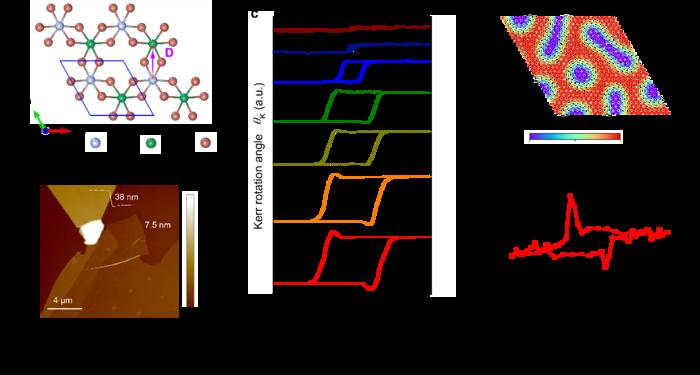In a recent study published in Nature Physics, researchers from the Hefei Institutes of Physical Science of the Chinese Academy of Sciences, together with researchers of University of Science and Technology of China, have introduced the concept of the “Topological Kerr Effect” by using the low-temperature magnetic field microscopy system and the magnetic force microscopy imaging system supported by the steady-state high magnetic field experimental facility.

Credit: HOU De et al.
In a recent study published in Nature Physics, researchers from the Hefei Institutes of Physical Science of the Chinese Academy of Sciences, together with researchers of University of Science and Technology of China, have introduced the concept of the “Topological Kerr Effect” by using the low-temperature magnetic field microscopy system and the magnetic force microscopy imaging system supported by the steady-state high magnetic field experimental facility.
The study holds great promise for advancing our understanding of topological magnetic structures.
Originating in particle physics, skyrmions are unique topological excitations found in condensed matter magnetic materials. Characterized by their vortex- or ring-like arrangement of spins, these structures possess non-trivial properties that make them potential candidates for next-generation magnetic storage and logic devices. However, the detection of skyrmions has traditionally relied on the Topological Hall Effect, which is limited to metallic systems. As the field of topological magnetic materials expands, there’s an urgent need for characterization techniques applicable to a broader range of systems, including non-metallic skyrmions.
Building on the discovery of two-dimensional ferromagnetic materials in 2017, the researchers predicted a new class of such materials, CrMX6 (M=Mn, V; X=I, Br), which exhibit non-trivial topological electronic states.
They synthesized high-quality two-dimensional CrVI6 single crystals and performed precise micro-area magneto-optical Kerr effect (MOKE) measurements. Remarkably, the MOKE hysteresis loop revealed distinctive “cat ear”-shaped prominences within certain thickness ranges and temperature intervals, resembling the electrical topological Hall effect observed in magnetic skyrmion systems.
Further theoretical analysis revealed that the coexistence of Cr and V atoms breaks the central inversion symmetry, and the strong Dzyaloshinskii-Moriya exchange leads to the generation of topological magnetic structures-skyrmions.
Atomic-scale magnetic dynamics simulations and theoretical calculations revealed the scattering of conducting electrons by the “topological charge” of skyrmions under a photoelectric field, elucidating the microscopic mechanism behind the optical Kerr signal during magnetization reversal.
Based on these findings, the researchers proposed a new scheme for the non-destructive detection of topological magnetic structures by optical methods using alternating photoelectric fields and high magnetic field spectroscopy.
This scheme offers spatially resolved, non-contact detection of skyrmions and other topological excitations, providing valuable insights into their microscopic mechanisms and broadening their range of applications, according to the team.
Journal
Nature Physics
Article Title
opological Kerr effects in two-dimensional magnets with broken inversion symmetry
Article Publication Date
4-Apr-2024



